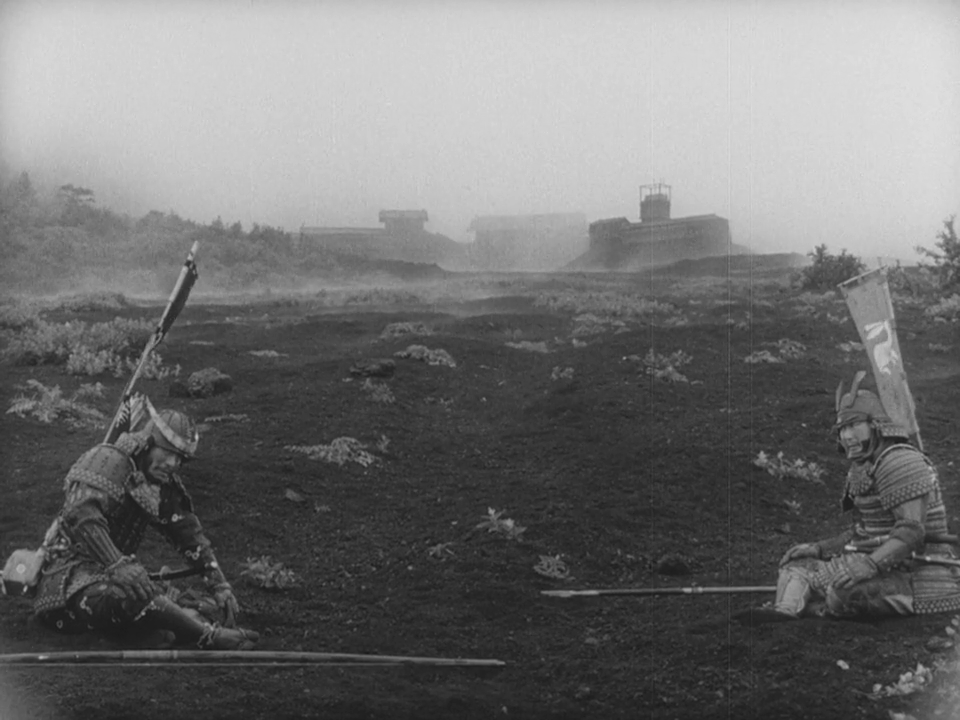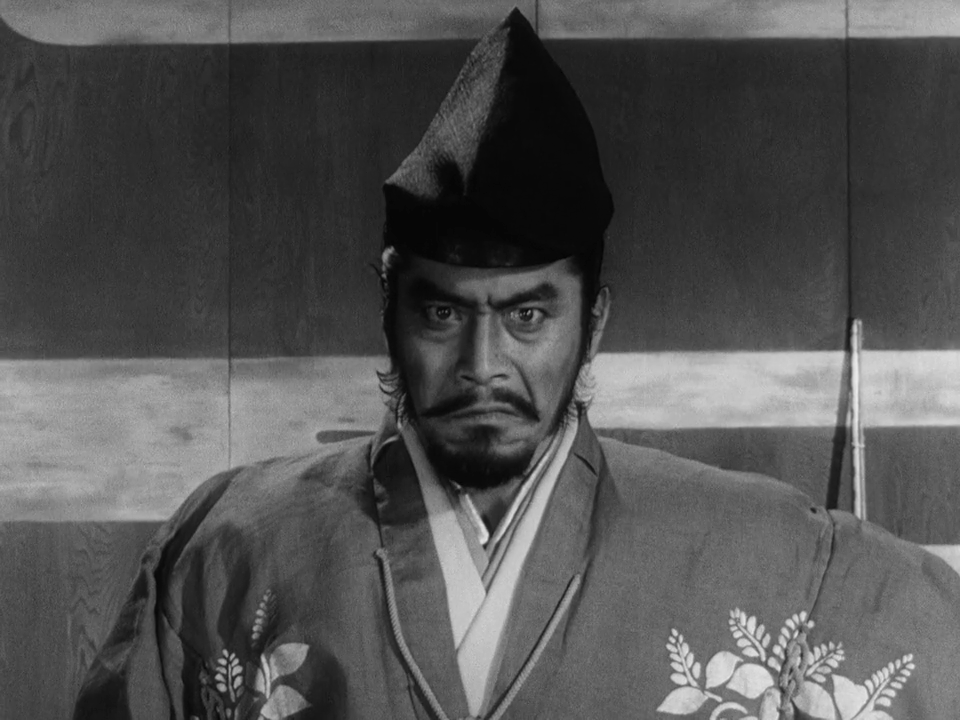Akira Kurosawa’s THRONE OF BLOOD (as I like to think of it, Michael Fassbender’s favorite Macbeth) is a meticulous, engrossing, and beautiful work. It was created at a time in 1957 where cinema still had a great deal of constraints, but also at a time where Kurosawa had honed his square-frame black-and-white film technique to perfection. There are shots in Throne of Blood which I haven’t seen done with as much skill and artistry in any other film.
Kurosawa is one of my favorite technical directors - not only does he get great performances and have compelling stories, but he focuses on movement of the camera and composition of the scene. He employs dollys and stages elaborate tracking shots (which were apparently too nauseating and a turn-off for Western audiences at first) and his framing is always beautiful and painterly. He’d directed 15 films before this one, all shot in the standard non-widescreen 1.37:1 ratio so there’s some excellent scene composition in this film, but at least a few parts where I felt like he wanted to go wider to give a grander scope to the scene.

He made another 1.37:1 film in 1957 called The Lower Depths but then shot almost exclusively widescreen for the rest of his career. The single exception is Dodesukaden in 1970, which is a bit of an outlier because it was also Kurosawa’s first color movie. I find that important because Kurosawa seemed to put off using color later than he might have. Color was adopted rapidly in film to differentiate against television, which was growing quickly in US homes at the time. 12% of movies were color in 1947, but that jumped to over 50% by 1954. I’m not completely sure how that maps to Japan, but the first Japanese color film was Carmen Comes Home in 1951, so I imagine that Kurosawa as a popular director would’ve had the resources to make a color movie earlier than 1970 if he wanted.
I love black and white movies because directors tend to focus on scene composition. For example, Film Noir has its characteristic heavy shadows which add large swatches of black to a scene. Throne of Blood has its share of shadow, but also makes heavy use of a white, thick fog to lighten parts of the picture. Kurosawa said “We decided that the main castle set had to be built on the slope of Mount Fuji, not because I wanted to show this mountain but because it has precisely the stunted landscape that I wanted. And it is usually foggy. I had decided that I wanted lots of fog for this film.” The fog is used to such an incredible effect in the (spoiler for those of you who haven’t read Macbeth) last shot where the central Macbeth character Washizu is shot down by his mutinous army. The white creates a striking negative space between the two factions as it envelops Washizu’s corpse in a lazy, slow curl. I have no idea of how hard it was for Kurosawa to get this shot or how many takes it took - the fog looks perfectly painted into place, and I’d have to imagine a contemporary director saying “fuck it, we’ll use a digital effect” instead.
The ending features one of the most incredible stunt sequences I’ve ever seen. Washizu is struck down by dozens of arrows which were mostly actual arrows shot into the scene by trained archers. The look of absolute terror on his face must have been at least partially real, as he waves his hands to indicate he’s about to move in a direction and for the archers not to shoot there any more. The effect is incredible, I can’t think of any other movie which communicates such tangible danger on screen.
Eight of Kurosawa’s 15 prior films had also featured Toshirô Mifune. By this point it seems that Kurosawa was more than happy to let Mifune dominate a scene. Throne of Blood in particular is very focused on Mifune’s Washizu and his increasingly manic behavior. Mifune delivers an wonderful amount of intensity and physicality in his performance, whether he’s stomping around a scene in full armor or silently staring down the camera while contemplating his own guilty conscience.

Overall, Mifune and Kurosawa went on to create 16 films (out of Kurosawa’s 30) together, but had a falling out after Red Beard in 1965. Mifune was required to keep a beard for the 2 year production of that film and that kept him from taking additional work. Apparently that was a contributing factor in their breakup, which seems pretty sad given the history of their collaboration. Red Beard was also the end of Kurosawa’s black and white films, so it seems that, whatever happened, he closed that chapter of his life and started experimenting with new techniques. But Throne of Blood, seven films prior, has the wonderful quality of being a film by a legendary director in a format he had mastered, starring a lead actor he loved to work with.
Comments? If you have feedback, please share it with me on Twitter!